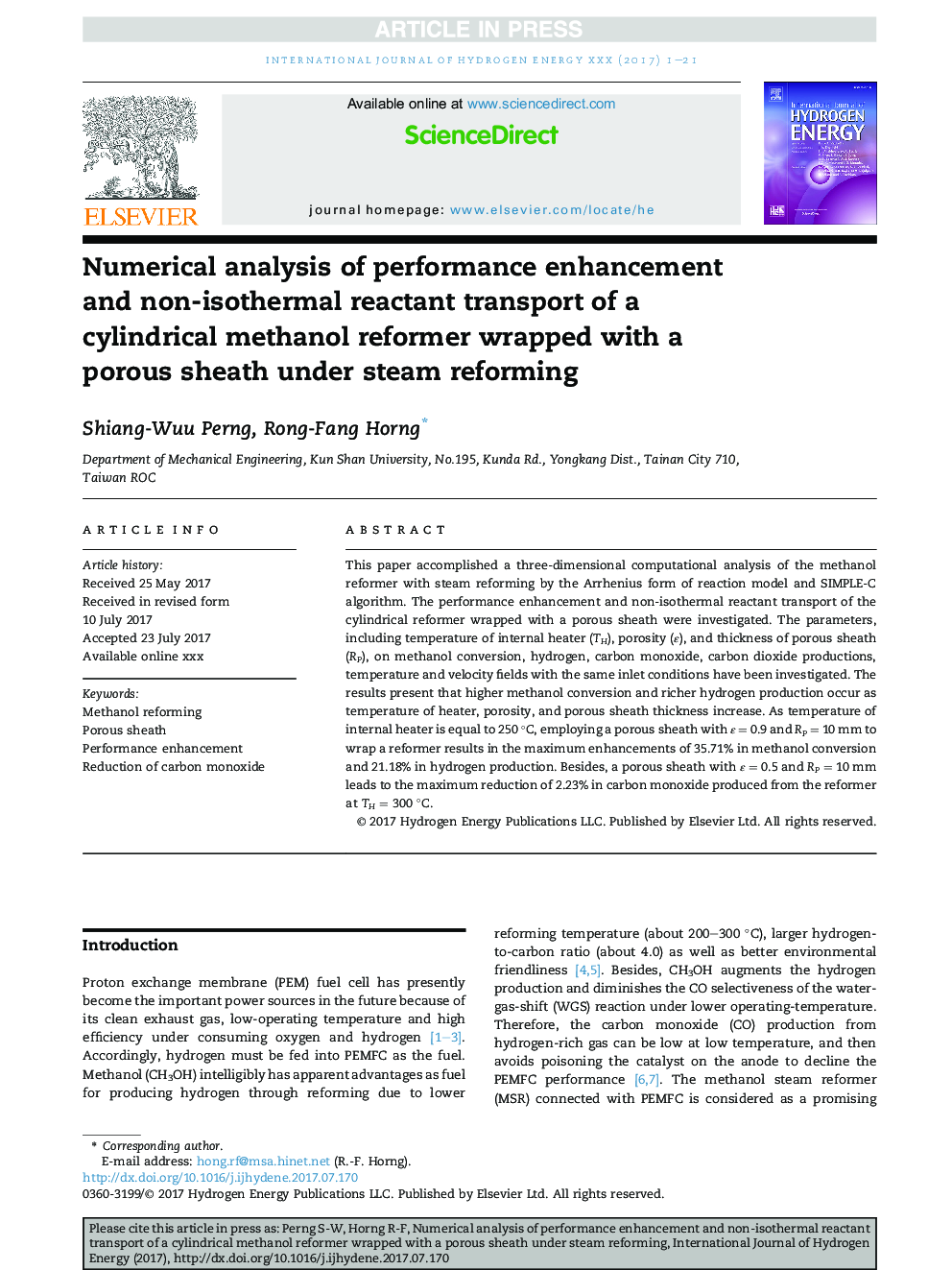| Article ID | Journal | Published Year | Pages | File Type |
|---|---|---|---|---|
| 5145226 | International Journal of Hydrogen Energy | 2017 | 21 Pages |
Abstract
This paper accomplished a three-dimensional computational analysis of the methanol reformer with steam reforming by the Arrhenius form of reaction model and SIMPLE-C algorithm. The performance enhancement and non-isothermal reactant transport of the cylindrical reformer wrapped with a porous sheath were investigated. The parameters, including temperature of internal heater (TH), porosity (ε), and thickness of porous sheath (RP), on methanol conversion, hydrogen, carbon monoxide, carbon dioxide productions, temperature and velocity fields with the same inlet conditions have been investigated. The results present that higher methanol conversion and richer hydrogen production occur as temperature of heater, porosity, and porous sheath thickness increase. As temperature of internal heater is equal to 250 °C, employing a porous sheath with ε = 0.9 and RP = 10 mm to wrap a reformer results in the maximum enhancements of 35.71% in methanol conversion and 21.18% in hydrogen production. Besides, a porous sheath with ε = 0.5 and RP = 10 mm leads to the maximum reduction of 2.23% in carbon monoxide produced from the reformer at TH = 300 °C.
Related Topics
Physical Sciences and Engineering
Chemistry
Electrochemistry
Authors
Shiang-Wuu Perng, Rong-Fang Horng,
